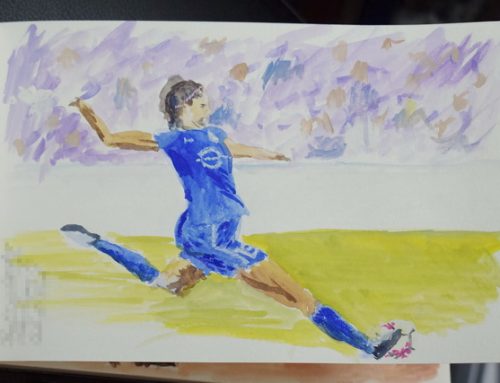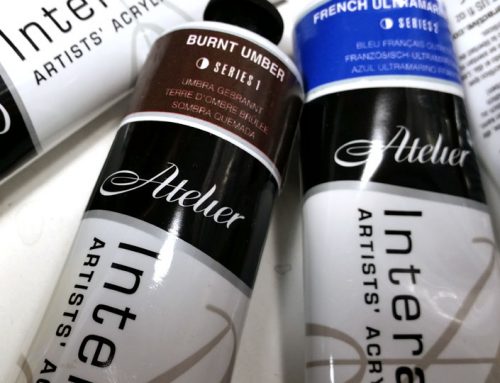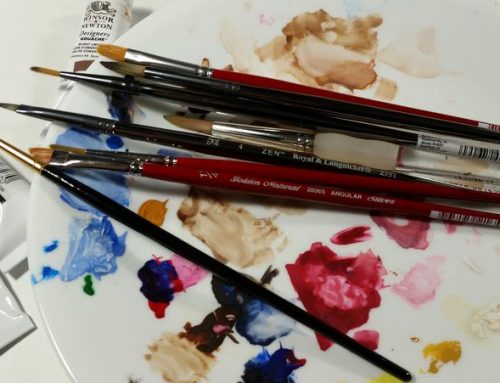One of the side-effects of airbrushing the artist must often deal with is something called “overspray”. This is that fog of color that extends beyond the central cone of aerosoled medium. The most obvious effect is an out-of-focus look to airbrushed works. More subtly, this fog has a tendency to add a thin haze of color wherever it lands–painting, car, carpet, etc. As a result, most airbrush artists employ masks and shields (and a filtered fan) to protect their work from the haze as well as keeping sharp those areas that need to be kept sharp.
Because of the famously bad batch of frisket (a flexible masking film) that has permeated the market for the past few years, airbrush artists have been trying to find ways to mask their works. I like using acetate and/or vellum. The trick is: how to get them to stay in place if you work on an easel (many artists work at a table)? My preferred method is to hold them in place using strong magnets. To that end, I need to use a sheet of steel on my easel behind the boards I’m painting.
I’d been using the current sheet of steel cemented to some plywood for a few years. It works great–and also protects the area behind the easel because of its size–but over time the metal-faced board has gradually warped due to gravity. I was able to work around it for quite a while, but it wasn’t going to work for the next project. The size of the art board was such that the warped backing board behind it was too far away from the edges for the magnets to hold. Grrrr.
For the past few days I’ve been reconstructing my backing board. I removed the steel from the plywood. I’ve since been attaching braces to the back of the steel in the hope of making it sufficiently stiff that warping is no longer a problem. Since I’ve also been careful to use a minimum of added material (square tubes, strips on-edge), the new board might actually be lighter with all metal than it was with the plywood.
The project should be done in another day or so. The temperature has been 38 °C (100 °F) or more the past few days. That has been slowing down the construction–as has not having enough clamps necessary to force the slightly bowed sheet to be flat on all parts at once. Even so, it looks like it will work out fine. Thank goodness I got experience building strong-and-light with that bridge model exam back in high school physics.





